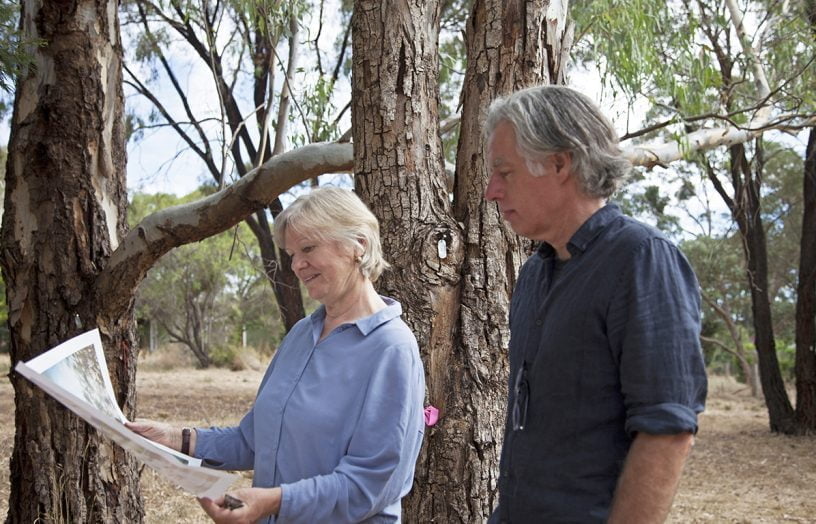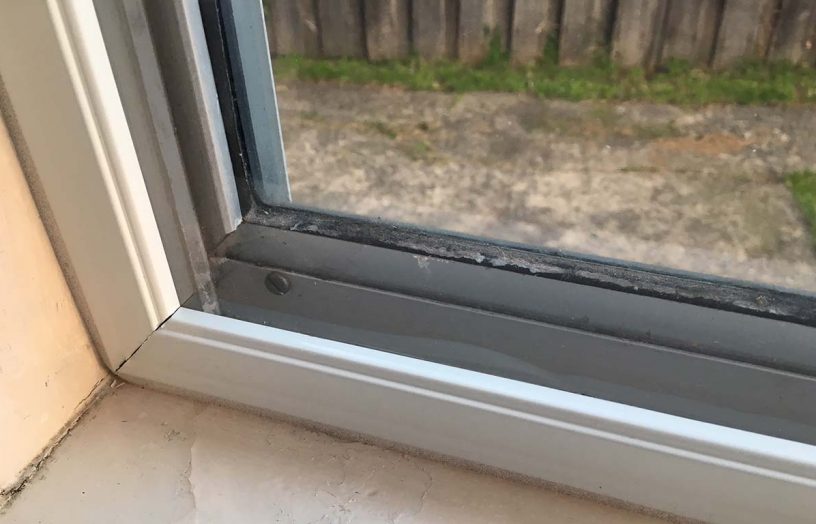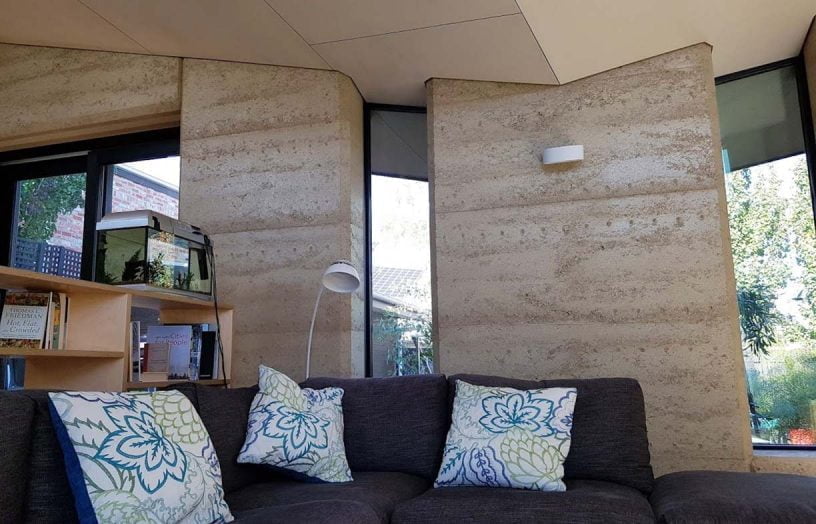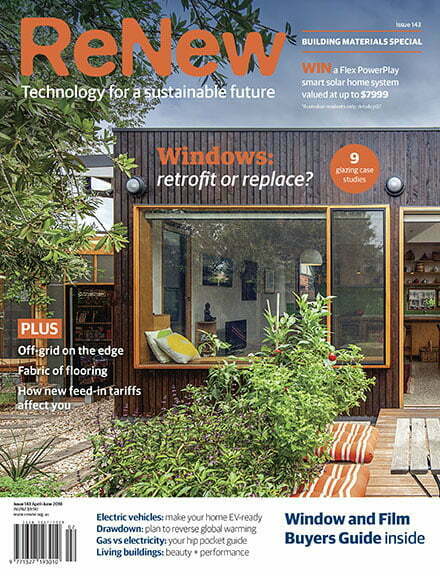Meeting the water petal at The Paddock

The Paddock is an eco-housing estate in Castlemaine, VIC. Read our other coverage of The Paddock’s development and the Living Building Challenge here.
For The Paddock, one petal of the Living Building Challenge, the water petal, has been an incredible challenge. The water petal states:
- Project water use and release must work in harmony with the natural water flows of the site and its surroundings.
- 100% of the project’s water needs must be supplied by captured precipitation or other natural closed loop water systems, and/or by recycling used project water, and must be purified as needed without the use of chemicals.
- All stormwater and water discharge, including greywater and blackwater, must be treated on-site and managed either through reuse, a closed loop system or infiltration. Excess stormwater can be released onto adjacent sites under certain conditions.
The challenge of reaching this ‘water positive status’ is further increased when it is also the aim to increase building density, use energy effectively and sparingly, use no chemicals and be affordable. In addition, connection to both the sewer and mains water is required to meet current regulations
The local conditions also make it difficult; it rains heavily for short periods of time and most of the time it is dry, with some years only getting 430 mm of rain.
Normally a town would not have evolved in a place with such low rainfall, but Castlemaine began because of gold and this wonderful vibrant place that has emerged now needs to face its water-restricted legacy if it wants to thrive into the future.
Two consultants have worked with the project to consider how to meet these challenges. Detailed designs (and the ultimate implementation) were done by Geoff Clarke of Vivid Civil Engineering. Robyn Overall at CJ Arms looked at using natural processes to achieve the water petal.
Three designs were considered. The first option used a mechanical wastewater system that was found to be too expensive and required ongoing maintenance and a lot of energy. As such, this was rejected by the project team.
The focus shifted to the second option: capturing rainwater and stormwater, and the use of greywater on the gardens. Under modelling by CJ Arms, this option would supply potable water from harvested roof water, using the 1423 m2 of roof. This strategy is adequate to meet demand in above-average rainfall years and could be supplemented with mains water during very dry years. Alternatively, roof catchments could be increased by providing covered carports to residents and collecting rainfall runoff from the additional roof catchment. About 2260 m2 of total roof area would be required to meet all potable demand with roof water in below-average rainfall years. However, this design would not meet the LBC water petal.
Therefore, CJ Arms investigated a third design option, based on their experience in reedbed technology. This third option would aim to meet the water petal by including a wastewater treatment system. Wastewater (from combined greywater and blackwater streams) is captured and treated through an on-site passive vegetated (reedbed) treatment system. A tertiary treatment stage then provides disinfection to enable the treated water to be available for non-potable reuse.
The treated water would be used to supply toilets and laundries, with the excess treated wastewater disposed of via irrigation over 500 m2 at a low rate on-site, and used as a backup irrigation supply for the orchard and ornamental plantings to supplement retained stormwater.
The proposed reedbed system is a passive wastewater treatment system from Reedbed Technology (a sister company of CJ Arms) designed for Australian conditions. The reedbeds are living planted systems that can be integrated into the surrounding landscape and fit well with the development’s design and its surrounding environment. An appropriate reedbed system for The Paddock would require 250 m2 of treatment area to manage all blackwater and greywater for the estate.
Reedbeds are biological systems and provide secondary treated water and some nutrient removal, in particular carbon and nitrogen. Tertiary treatment is required to produce treated water suitable for reuse. This would include:
- carbon filtration (biologically activated carbon filter or BAC) for removal of dissolved aromatics, removal of colour and improved UV transmissivity
- microfiltration for removal of microbiological contamination
- ultraviolet (UV) disinfection for second barrier removal of microbes
The reedbed system offers advantages of cost, low energy and reduced carbon emissions over a conventional system like that proposed in the first design (say a membrane bioreactor or moving bed bioreactor unit). The capital cost is significantly lower, and operational costs are also lower. The estimated energy consumption by the proposed passive wastewater treatment system is less than 1 kWh per kilolitre of water produced. Carbon emissions are reduced by up to 80%, primarily due to the reduced need for mechanical aeration of the water during treatment.
Another advantage is zero chemical use: membrane-based mechanical treatment units require chemical scouring of membranes during routine maintenance, which is not required by reedbeds.
Using option three would mean that we could achieve the intention of the LBC water petal with no water going to sewer and no water coming from mains, though we would still need to be connected to both to meet planning and regulatory requirements.
Unfortunately, The Paddock project was too far along in the approval process to implement this third design, so option two is being implemented in the first instance. It will connect to the sewer through a single point to ensure potential for a treatment system in the future.
It is important for all projects to continue to strive to meet the Living Building Challenge and advocate to authorities to revisit how water systems are designed into our developments.
Even without fully meeting the water petal at present, The Paddock is the exception, not the rule. Other developments risk leaving a negative legacy for future generations.
This is an edited extract of an article first published by The Fifth Estate. Dominique Hes is director of Thrive Research Hub at the University of Melbourne. Robyn Overall is a water sustainability specialist at CJ Arms and Associates.
Further reading:
 Efficient homes
Efficient homes
Living building challenge – Enhancing the local environment
Central to the Living Building Challenge is design that takes account of much more than thermal performance, such as giving back to the local economy. Sasha Shtargot looks at one of the first projects taking this on in Australia.
Read more DIY
DIY
DIY: Insulating aluminium windows
Many Australian houses feature aluminium-framed windows, which perform poorly thermally. But performance can be greatly improved with a simple DIY project. Glenn Newman explains how his friend Lisa Rime came up with an easy system for DIY double glazing.
Read more Sustainable tech
Sustainable tech
A mania for monitoring: Beyond the smart meter
When you build a high-performance house, you want to know that it’s performing as expected. Cameron Munro has monitoring in place to do that—and he’s producing some lovely graphs in the process!
Read more

